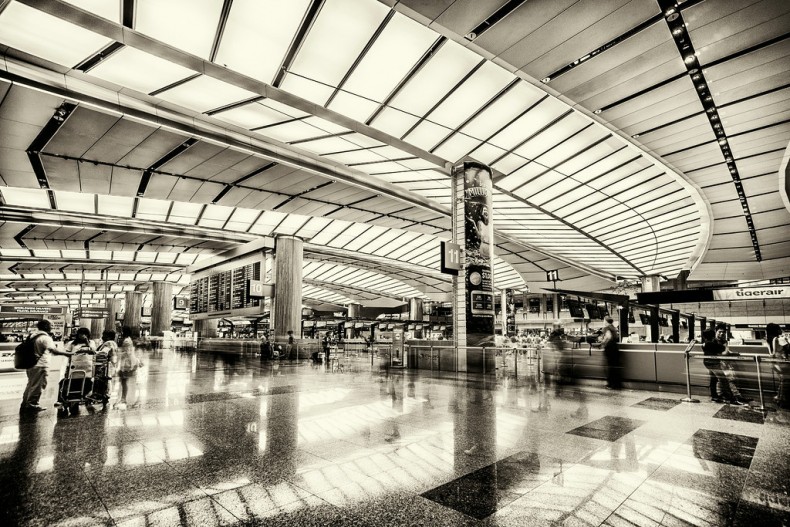
In a recent Institute of Policy Studies (IPS) survey on public perceptions of Singapore’s history, seven in 10 respondents said that they were aware of the opening of Changi Airport. Asked to rank the importance of the launch of the airport in 1981 on a scale of 1 to 5, with 5 being “very important”, the 1,101 respondents gave a score of 4.2 for the event’s importance to them, and 4.3 for the event’s importance to future generations of Singaporeans.
This placed the opening of Changi Airport among the five most important events in Singapore’s history, as perceived by Singaporeans. The survey sample was representative of Singapore’s population.
These findings beget two questions – What is the significance of Changi Airport in Singapore’s short history? And why do Singaporeans attach such high importance to the opening of the airport?
I would suggest that Changi Airport exemplifies the foresight of then-Prime Minister Lee Kuan Yew and his Cabinet in charting Singapore’s future. Against the advice of foreign aviation consultants who recommended expanding Paya Lebar Airport with an additional runway, government leaders decided to transform the old Royal Air Force Changi Airbase into an international airport. That decision was a critical linchpin to making Singapore a regional aviation hub. Unlike Paya Lebar Airport, which was surrounded by housing estates, Changi had ample space for development and expansion of the airport. Today, Changi Airport is a physical emblem of Singapore’s progress from third world to first.
The economic contribution of Changi Airport
In 2014, Changi Airport served about 100 airlines flying to more than 270 cities in over 60 countries worldwide. As the home base of Singapore Airlines (SIA), Changi also connects SIA passengers and cargo to onward flights to regional destinations. Changi Airport has stimulated development and employment in the airline and airport-related industry for Singaporeans. In his National Day Rally 2013 speech, Prime Minister Lee Hsien Loong noted that Changi Airport and airport-related services provided some 163,000 jobs and account for 6 per cent of GDP.
Last year, 54.1 million passengers went through Changi Airport, the most in its 33-year history. This was a 0.7 per cent increase from 2013. However, increasing competition from other Southeast Asian airports will require that Changi Airport be more than an important regional passenger and cargo hub in future. The continuous upgrading of the airport terminals to ensure efficiency and comfort for travellers demonstrates Singapore’s commitment to staying competitive.
In the recent Budget 2015 announcement, the logistics and aerospace industry was identified as one of the growth clusters of Singapore’s future by Deputy Prime Minister and Finance Minister Tharman Shanmugaratnam. There are plans to build Singapore’s capacity as an air hub and broaden the range of services offered – for example, land has been set aside for an industry zone at Changi East to house maintenance, repair and overhaul companies and airfreight operators. These investments are necessary to ensure employment and business opportunities for future generations of Singaporeans.
An icon of progress
Changi Airport is also an icon of Singapore’s progress. In 1981, some 250,000 Singaporeans thronged the airport in the first two weeks of its opening. Singaporeans were understandably excited about the opening of Changi Airport as it heralded a new phase of socio-economic progress, connecting Singapore to rest of the world.
Today, Changi Airport has become a household name to foreign travellers, even those who have not set foot into downtown Singapore. Many travellers have transited seamlessly through Changi Airport, say, from London to Sydney. Last year, Changi Airport was awarded the Skytrax World’s Best Airport at the 2014 World Airport Awards. The airport’s efficient management of connecting flights and transit passengers reflects competency of the nation-state and its unwavering commitment to service excellence. Therefore, Changi Airport’s success speaks well of Singapore as a whole.
To Singaporeans, Changi Airport is also an accessible social space for family outings and is part of their collective social memory. The recent ground breaking ceremony for the construction of Jewel Changi Airport – an iconic mixed-use complex with an indoor garden reiterates the importance of maintaining Changi Airport’s relevance to both Singaporeans and tourists through regular upgrading and renewal.
However, Changi Airport should be more than a destination for retail or dining, but also for education. The IPS survey revealed that there are still Singaporeans who said they were not aware of the opening of Changi Airport. They tended to be younger, female and ethnic Chinese, hailing from the lower income groups. It is not clear if the lack of awareness was a result of indifference or a lack of media coverage about how Changi Airport came to be.
To tell the story of Changi Airport to all Singaporeans and foreign visitors, perhaps an airport museum can be constructed to with information of the airport’s development and the significance of the aviation industry in Singapore. Schools could then bring students on learning journeys to this museum. Having a museum onsite would also differentiate Changi from other regional airports.
Another suggestion would be to install a Boeing 777 passenger jet with a flight simulator on the roof of the airport terminal as a permanent museum attraction so that visitors could learn about Singapore’s aviation history and experience flying an aircraft into and out of Changi Airport.
This initiative could help Singaporeans know about Changi Airport and its significance from a younger age, even as they enjoy our iconic airport in a host of different ways.
Paveena Seah is a Research Analyst at the IPS Social Lab, a centre for social indicators research.
Top photo from Flickr
